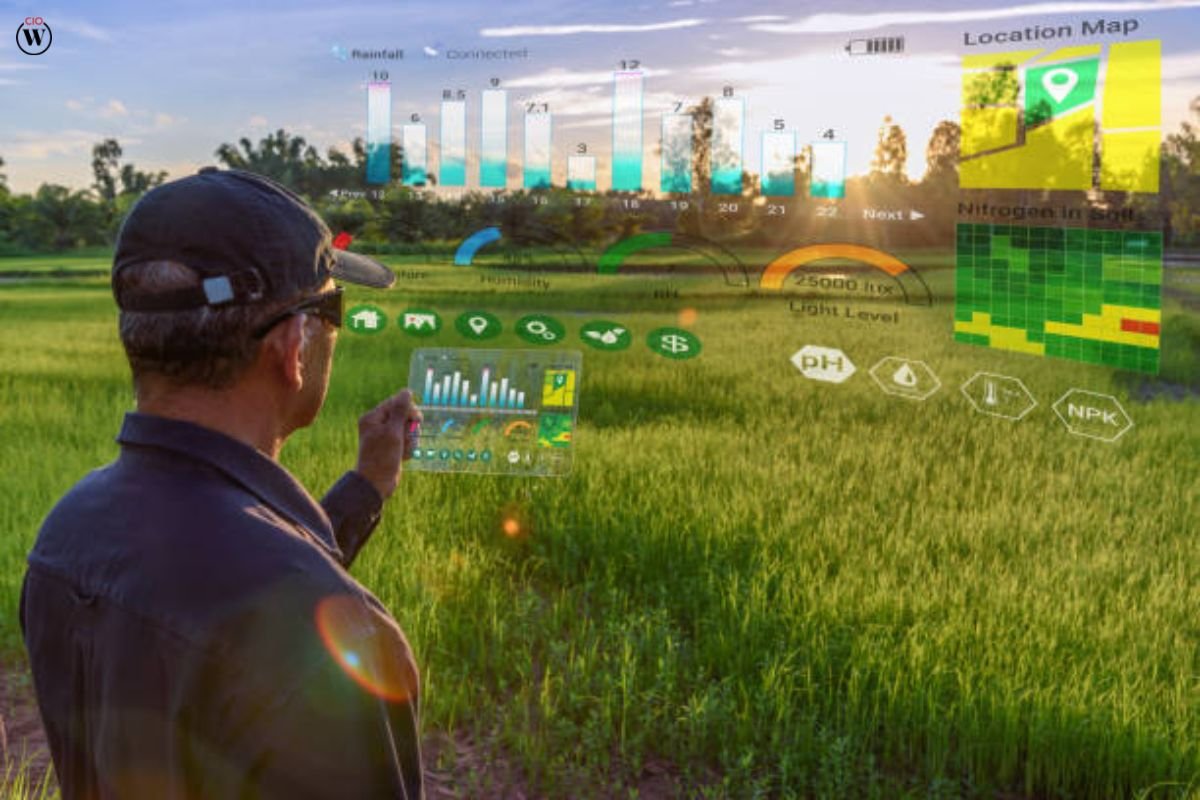Farming is an important part of any country’s economy. The need to feed a growing global population is a constant and growing challenge. The farmers’ tried-and-true practices aren’t cutting it anymore. As a result, new forms of automation are developed to meet these needs and provide many employment prospects in the industry.
In recent years, Applications of AI in Agriculture have rapidly risen to prominence as a game-changing tool in fields as diverse as academia, finance, robotics, agriculture, and more. As a result, it is having a profound impact on the agricultural sector and shaping it in fundamental ways.
Here are the 9 Applications of AI in Agriculture;
1. Precision Farming
This data-driven approach to agricultural management and Applications of AI in Agriculture is known as “precision farming,” and it’s used to provide crops the optimal conditions for growth and maximum yield. The technology has been used by mobile agricultural yield monitors to take spot harvest measurements, providing farmers with insight into the most and least productive areas of their fields.
By associating this information with specific GPS coordinates, they may create yield maps. The use of machine learning and artificial intelligence may assist with this by allowing us to foresee how adjusting certain parameters would affect the final result. Machine learning algorithms may be used to try out different scenarios and bring crop yields closer to their ideal levels whenever a change occurs in any one of a number of variables.
Applications of AI in Agriculture industry to aid in the diagnosis of plant diseases, pests, and insufficient plant nutrition. Sensors powered by AI can detect the presence of weeds, zero in on them, and decide where and how much herbicide to apply within the safety zone. This reduces the likelihood that harmful chemicals may build up in our food supply due to excessive usage of herbicides.
2. Soil Analysis and Optimization
Applications of AI in Agriculture, and soil plays a crucial role. Soil examination is crucial in order to have a healthy and rich agricultural field while saving money and energy.

For optimal plant growth, it’s vital to take into account the soil’s temperature, moisture level, microbial community, and density. Machine learning techniques may be used to investigate evaporation rates and other processes involved in farming.
The soil’s micronutrients and macronutrients play a crucial role in the well-being of plants. The yield of a crop may be predicted both in terms of quality and quantity. And after the crops are planted, monitoring their growth is essential for maximizing output. To improve crop health via modification, it is essential to have a firm grasp of the interconnections between crop growth and the environment in which it will grow.
3 Analyzing and Improving Soil Quality
Soil is an essential part of every agriculture. Soil inspection is a crucial process in reducing expenses and preserving energy for a healthy and wealthy agricultural field. For optimal plant growth, it’s vital to take into account the soil’s temperature, moisture level, microbial community, and density. Machine learning techniques may be used to investigate evaporation rates and other processes involved in farming. Soil micronutrients and macronutrients are crucial to the growth and development of crops.
The yield of a crop may be predicted both in terms of quality and quantity. And after the crops are planted, monitoring their growth is essential for maximizing output. To improve crop health via modification, it is essential to have a firm grasp of the interconnections between crop growth and the environment in which it will grow.
4. Breeding Species
It takes a lot of time and effort to breed plants so that they may thrive in a certain environment or satisfy a particular dietary need. Researching consumer personae and using various methods for mutation detection in plants are also part of this process.
Applications of AI in Agriculture for Deep learning algorithms may aid, speed up, and simplify the process by analyzing recent data on agricultural performance in a variety of climates and ecosystems, as well as consumer buying trends relating to certain crops. These results might be used to inform the development of a probability model for predicting with high accuracy which genetic characteristics will yield which crops that farmers and consumers would want.
5. Weed & Disease Detection and Prevention
Diseases and weeds may have a major impact on production and crop quality, but they can be detected and eradicated using eco-friendly methods with the help of robust machine-learning models and AI-powered systems.

For instance Applications of AI in Agriculture, robots equipped with artificial intelligence can eliminate weeds manually, saving farmers time and money by eliminating the need for pesticides. Disease symptoms in plants may be used to train robots to eliminate the plant before it spreads. Outside of the realm of robots, environmental data might be used to improve crop health and stop the introduction and spread of disease.
The identification of plant diseases and pests may be aided by image recognition systems based on deep learning methods. Models for monitoring plant health may be developed using image detection, classification, and segmentation methods.
6. Improving Indoor Farming Conditions
Weather, temperature, humidity, moisture, and sunlight are only a few of the environmental parameters that may be improved with the Applications of AI in Agriculture. Through constant monitoring of plants using implanted cameras and sensors, one may actively manipulate the environment.
The gathered data is utilized as input into logic controllers and neural networks. It removes the element of surprise from determining the optimal growing conditions for a variety of crops. Using this method, farmers may make their environments more conducive to crop growth.
7 Irrigation System Administration

Anything in excess is undesirable. Extreme water consumption might have unintended consequences. Applications of AI in Agriculture and machine learning might help farmers determine the optimal watering schedule for their crops, which can vary greatly based on variables such as climate, season, and soil quality. Even under ideal conditions in a greenhouse, water use might vary. With the help of AI systems, farmers are able to better monitor and adapt their water irrigation infrastructure to changing conditions.
8. Mapping Yield with Demand
Artificial intelligence (AI) and machine learning (ML) technologies, which are at the core of modern precision farming, go beyond historical data-based predictions. They now have the tools for multi-dimensional analysis, which will help them better match the supply of crops with market demand. The combination of data from sensors and cameras with computer vision technology improves forecasting and so helps cut down on food waste.
9. Farm Data Software

A lot of individuals have trouble keeping track of the total monthly and annual crops grown and computing totals. In light of this, AI is being used to develop a number of useful applications and programs, the first of which would allow us to acquire an approximate estimate of the next generation of crops. In addition, we’d have access to a record of the actual harvest, and the app also provides a number of helpful guidelines for optimizing crop production.









